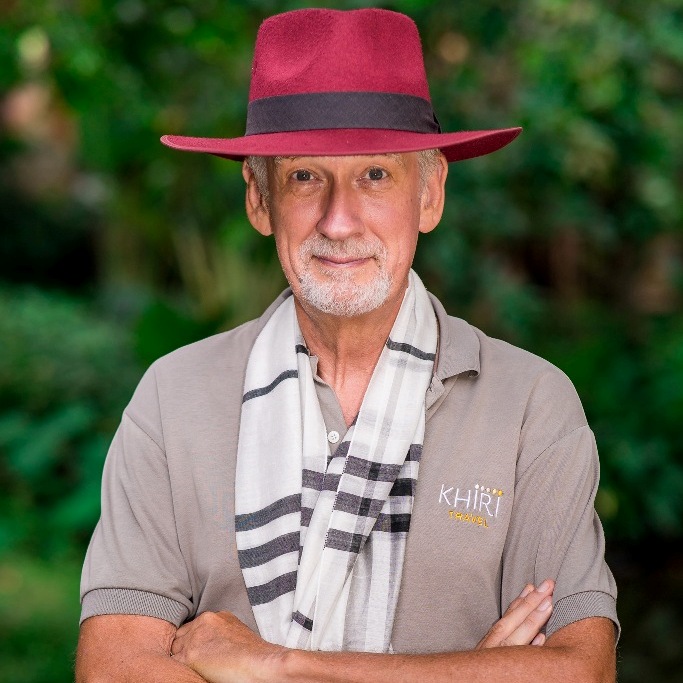Meet Sak Yant experts on this deep dive into Thailand’s sacred tattoo art form
Sak Yant is an ancient art form deeply rooted in Thai culture and spirituality. From the bustling streets of Bangkok to the serene temples hidden in the northern mountains, Thailand offers a unique experience for tattoo enthusiasts seeking more than just an inked masterpiece. Sak Yant tattoos go beyond mere body art; they represent a spiritual journey, a sacred connection to the supernatural realm, and an embodiment of Thai beliefs and traditions.
Sak Yant, meaning “tattoo yantra” in Thai, combines intricate designs with spiritual blessings to create a powerful and meaningful tattoo. Dating back centuries, this ancient practice originated in Southeast Asia and has become synonymous with Thailand. It holds its roots in Buddhism, Animism, and Brahmanism, blending elements from each to form a deeply spiritual experience.
Traditionally, Sak Yant tattoos were exclusive to monks and warriors, believed to imbue wearers with special powers, protection, and good fortune. The art form has gained popularity among locals and travelers alike, as people are drawn to the enchanting allure of these sacred tattoos.
The process of receiving a Sak Yant tattoo is a spiritual ritual in itself. It often involves a visit to a Sak Yant master, an esteemed monk or spiritual practitioner, who meticulously designs and administers the tattoo. The rituals may include prayers, chanting, and the use of ancient tools, such as a bamboo needle or a metal rod, to etch the design into the skin.
As you delve into the world of Sak Yant tattoos, you’ll discover a wide array of symbolic motifs, each carrying its unique meaning. From the powerful tiger representing strength and courage to the mythical Garuda bird symbolizing protection, these tattoos reflect the wearer’s aspirations, desires, and beliefs.
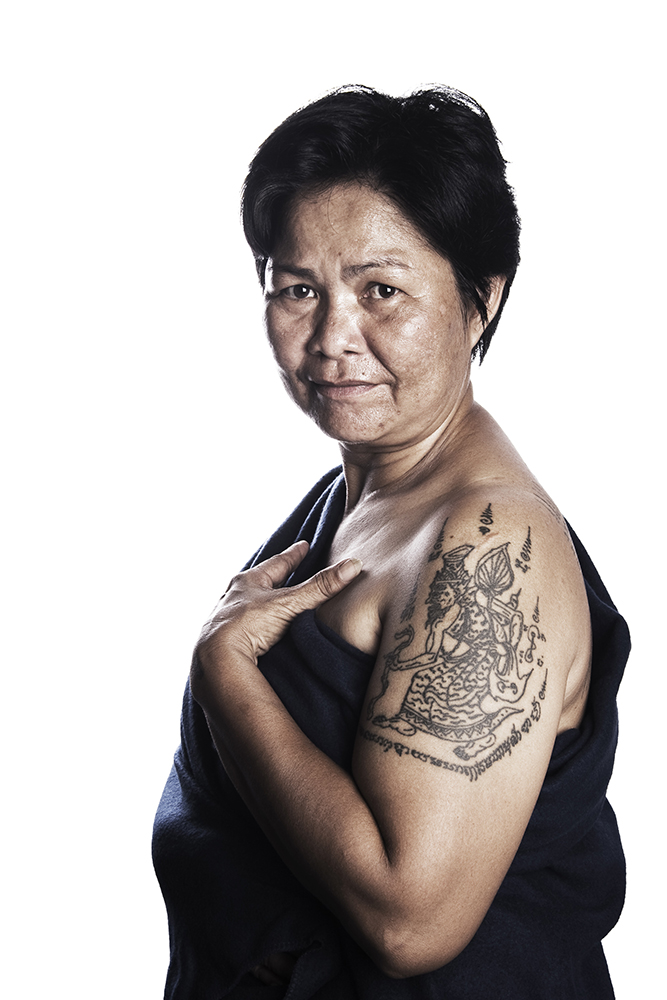
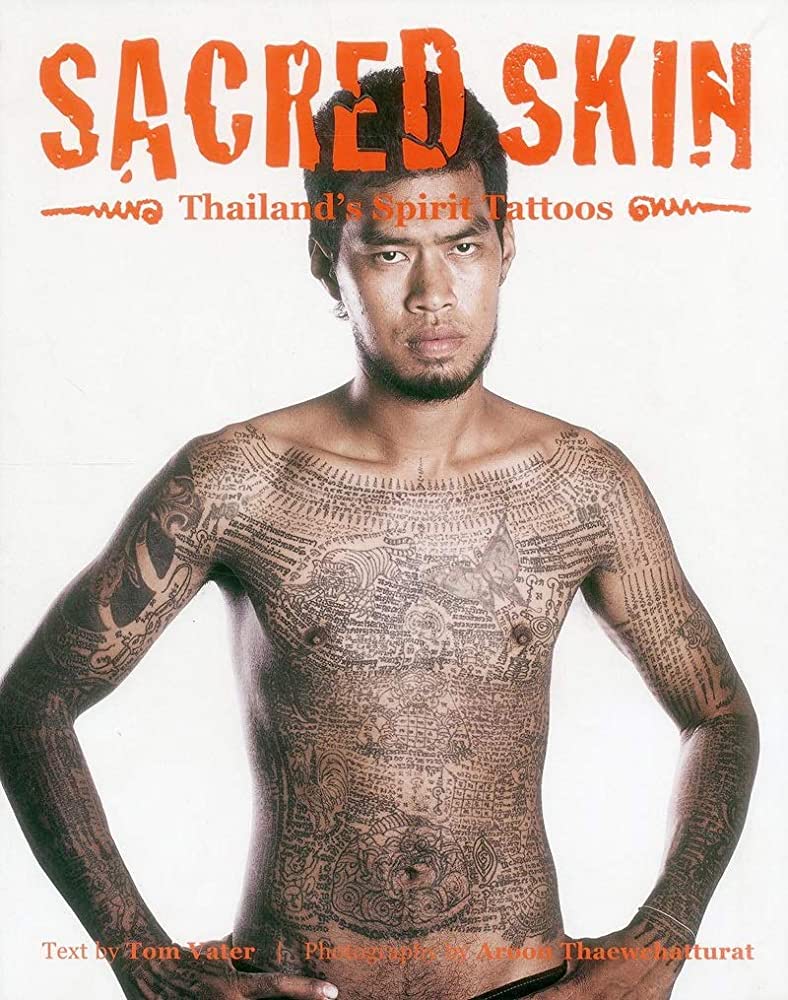
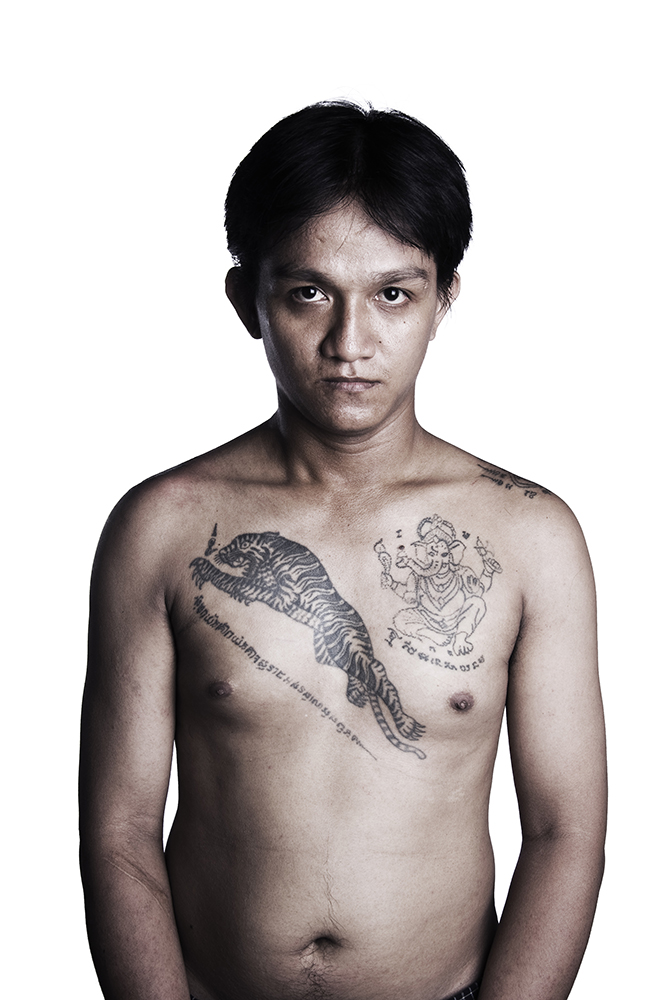
I began my Sak Yant experience by meeting up with Aroon Thaewchatturat, a photographer whose book Sacred Skin (see above) is probably the best introduction to this fascinating art form. Aroon has photographed tattoo masters and wearers and her book dives deep into the culture to explain the meanings of the tattoos and the stories of those who have chosen to be inked. Aroon is excellent company and can provide our clients with a great presentation on the history and significance of Sak Yant, over a coffee of course.
We then moved on to the real deal – a visit to a genuine Sak Yant tattoo master. There are lots of commercial tattoo parlours in Bangkok that will do Sak Yant designs, but for a tattoo to be authentic, it needs to be done by a real master or ajarn. We visited Ajarn Neng, whose shop is located deep into a suburban district in the west of Bangkok, with few frills.
I watched as Neng went through the tattoo process with his clients. Sak Yant tattoos are designed not as decoration but as a way to help the wearer handle certain issues in their lives, so Neng spends fifteen minutes with each client discussing their problems and deciding on the right design for them. He then draws the tattoo on the skin in ink to give the client a preview, before moving on to the actual tattooing itself (note Neng can also apply temporary oil-based tattoos for those who aren’t 100% committed!)
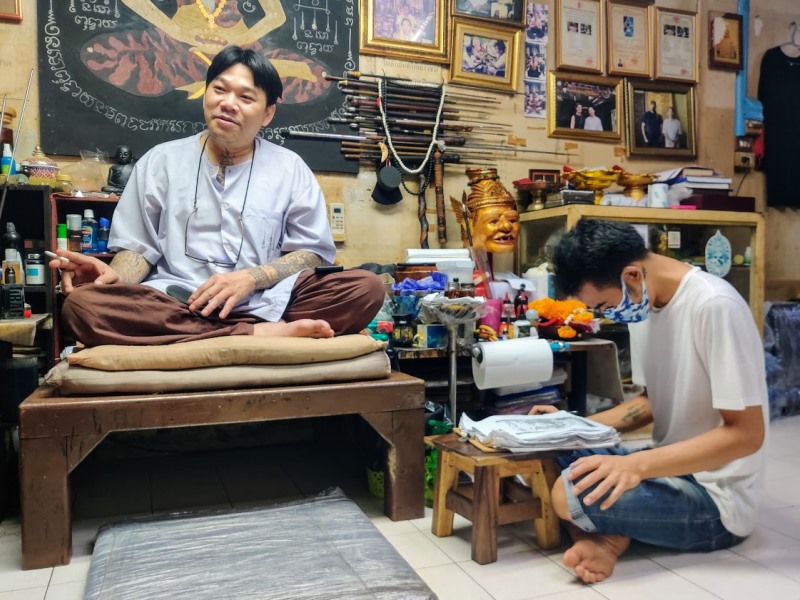
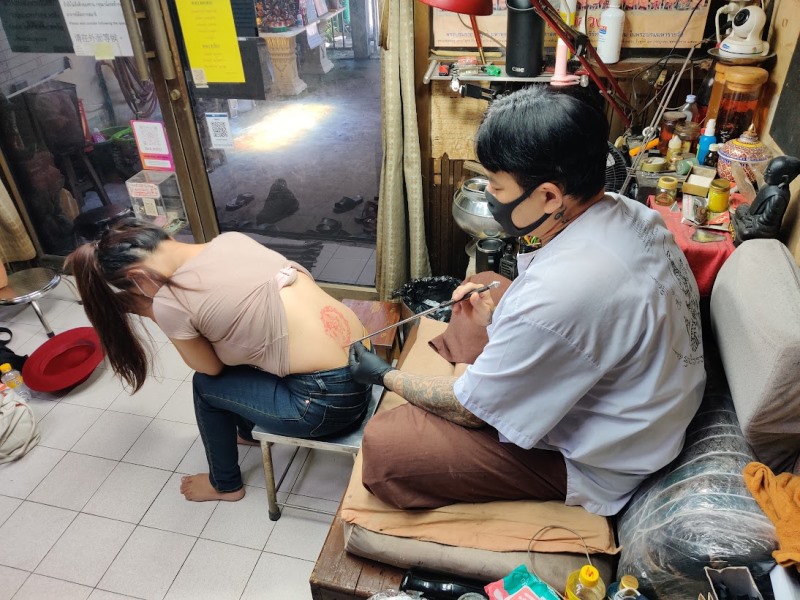
The inking takes around 30 minutes and, with the mantra chanting and religious iconography in Neng’s shop, it is more akin to a spiritual ceremony than anything you may have seen on Miami Ink or similar shows. Throw in the plastic chairs, ceiling fan and Neng’s ever present cigarette, and you have an authentic, gritty Sak Yant experience.
Khiri can arrange a meeting with Aroon and a visit to Ajarn Neng’s shop to give your clients a deep insight into Sak Yant. Clients who want to go all the way can also get their own Sak Yant ink done by Neng with sufficient notice – note that he uses sterile disposable tattoo equipment to allay any safety fears.
